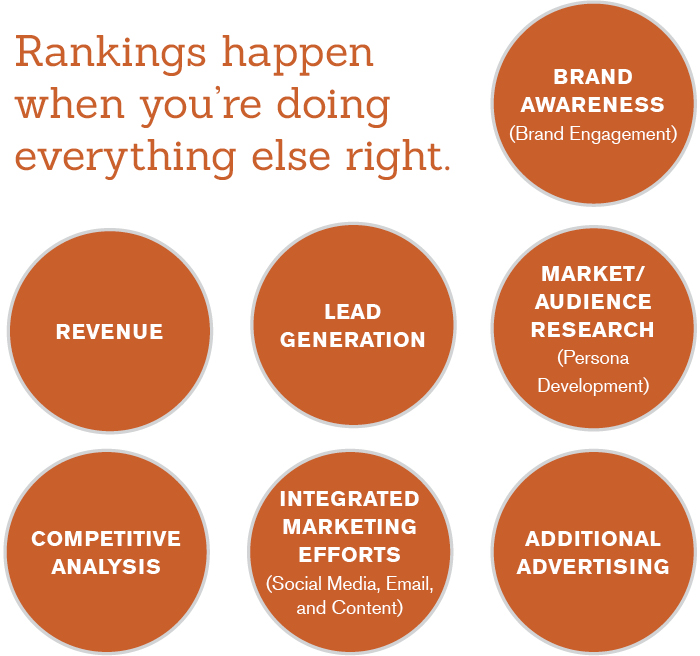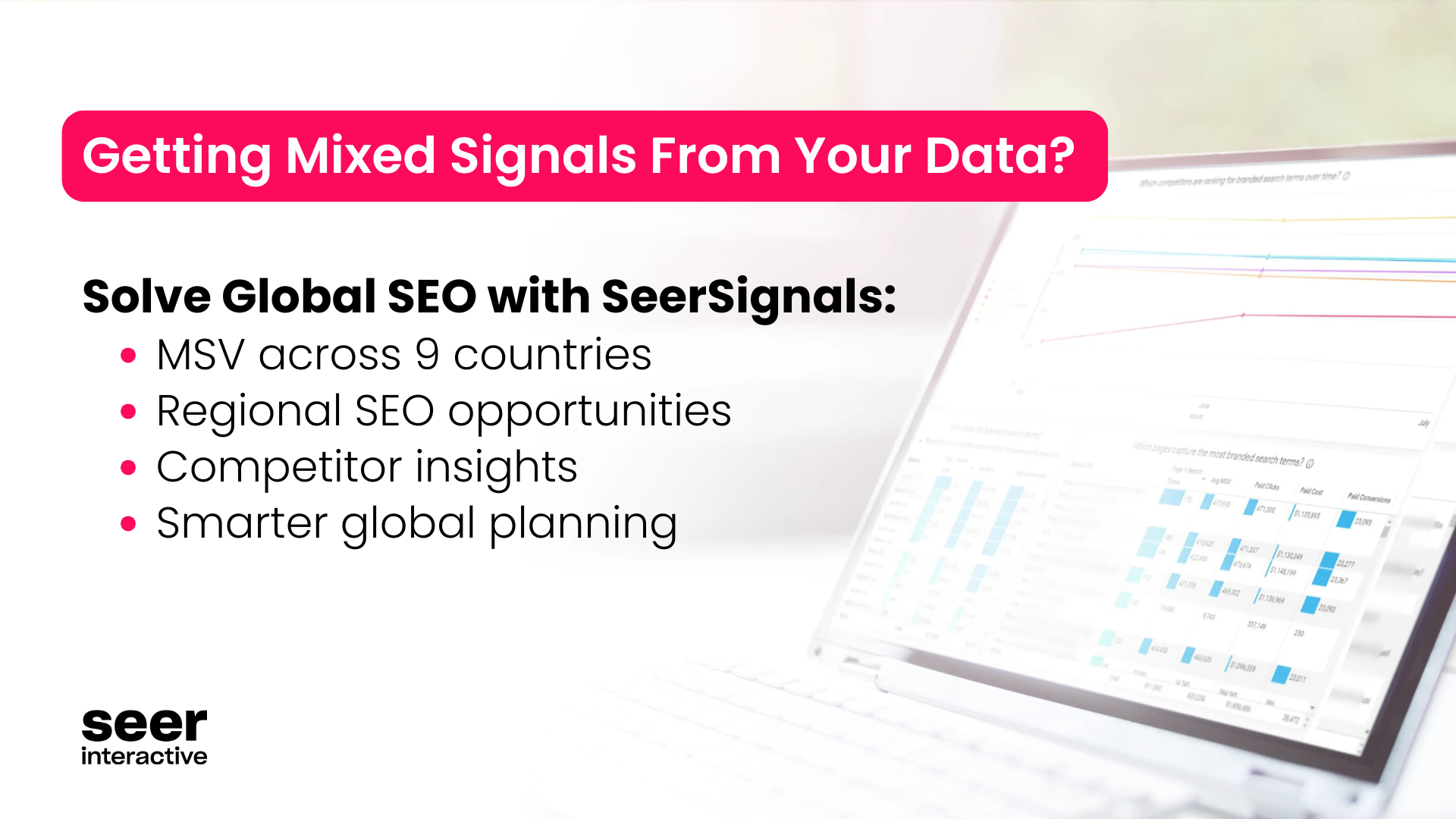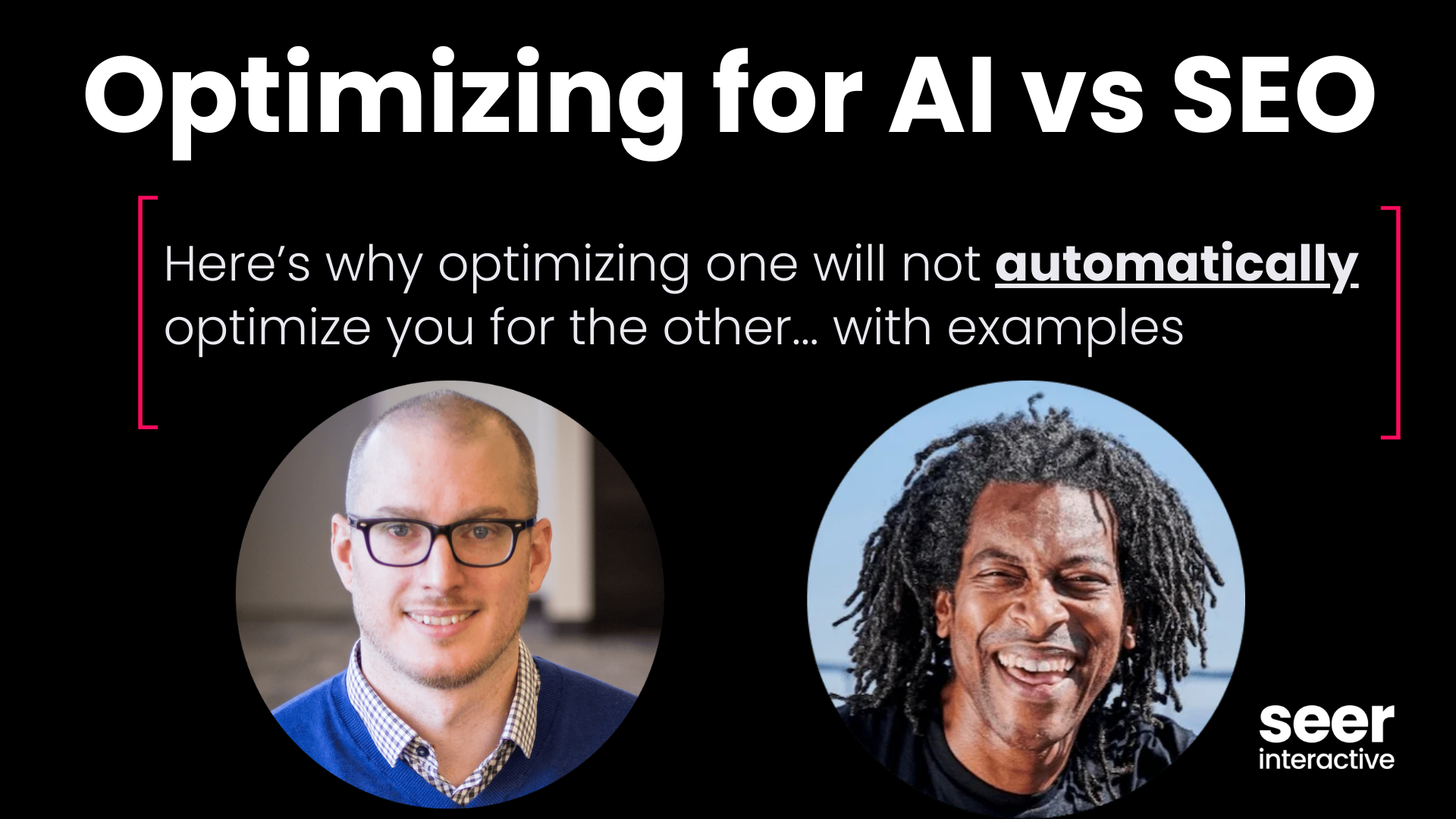In Google’s New York City office is a wall that lists some of the company’s most important mottos. Among these phrases, one sticks out: “Focus on the user and all else will follow.”
Why is this saying so important for digital marketers to remember?
In short, search engines are getting smarter. Platforms like Google and Bing are transitioning away from misguided keywords and focusing on holistic content that matches user intent. Brands can navigate this shift by executing SEO with an audience-first approach. By analyzing the entire user search journey and doing so with empathy, audience-first SEO can boost your brand’s image, customer satisfaction and long-term ROI. Within the next few years, audience-centric SEO will not just be an option - it will be a must for brands that want to compete in the SERPs.
We’ve rounded up the best articles from around the web for a crash course in audience-centric SEO. What is audience-centric SEO? How did it come about? Why does it matter? Take a look below for answers to these questions.
What is audience-first SEO?
Evaluating the entire search journey
Re-Think Search: Use SEO To Grow Your Business, Not For Rankings by Alexis Wolfer
To get the most out of your SEO efforts, focus your strategy on reaching long-term business goals, such as understanding how a customer interacts with your brand through search, not just how to improve rankings.
To quote Alexis Wolfer, who delves deeper into the subject within her post, “Companies should invest in SEO to understand the way users search during their entire search journey – not just to rank for keywords in the intent to purchase or equivalent phase.”
A user travels through several different search stages before they make a decision to convert. Each phase varies in how the user is searching and what they are searching for. This is critical for marketers to recognize when they are crafting an SEO strategy if they want to connect with potential customers in all phases of their search funnel.

Approaching SEO strategy with empathy
The Selfless Approach to SEO by Ali Freeze
In today’s extremely competitive search landscape, setting your brand apart from the rest. Ask yourself: Are we giving the audience what they want? There is a person behind every click and every session. Keeping this personal perspective will allow you to not only understand what the user wants, but will also allow you the ability to anticipate what they’ll want in the future.
Approaching content through the lens of a person is integral to differentiating your brand and becoming a trusted source. Steps to begin your path to selfless SEO include targeting keywords with content that you’ll never rank for, but will improve your content’s quality, donating your data to earn high quality links, and initiating discussions that may have nothing to do with your products or services but ultimately help or entertain your customers. This approach applies everywhere, even in local SEO. Let’s face it - smart marketing is personal, perceptive marketing.
Remembering the bigger picture
If You're Only Focused on Keywords Here's Where You're Thinking Wrong by Julia McCoy
“Here’s the real question – do keywords even matter in modern SEO?" In short: yes. But they matter significantly less than they used to,” wrote Julia McCoy of Search Engine Journal in her article. When executing SEO, don’t get caught up in keywords and lose sight of the bigger picture. “Where people get confused is by thinking the keywords themselves are more important than user intent,” McCoy writes. This article wraps up with one important point: put your audience first and the search engine second.
How did it come about?
Google Getting Better at its Job
SEO in a Two Algorithm World by Rand Fishkin
Moz’s Rand Fishkin provides a striking statement: “Google’s last 3 years of advancements erased a decade of old school SEO practices.” Needless to say, SEO has come a long way. Machine Learning (ML) and its deep learning practices include self-learned concepts like user intent, language, and connections of topics and keywords. As these smarter algorithms emerge, there is a need to consider more than the old on-site SEO practices. ML is real and it’s here to stay. Optimizing for only the traditional ranking inputs leads your brand to fail in reaching its full potential. Approaching SEO with an audience-first mindset and creating high quality content will drive successful searcher outputs.
Machine Learning & Personalization
The Future of SEO: AI, Personalization, and Machine Learning by Travis Bliffen
One word: RankBrain. Google’s search algorithms incorporate artificial intelligence (AI), and in 2015 RankBrain’s artificial intelligence system ushered in a new era of content over keywords. “RankBrain is an AI change that attempts to ‘understand’ the context of the content on any given site,” writes Travis Bliffen, “It essentially eliminates the idea of keyword density, because the challenge is to understand the content and its value to search engine users.”
The introduction of RankBrain signals the direction that Google is taking in trying to best serve its primary customer; the user. If Google is taking an audience-centric approach to its search engine, it’s necessary for brands to take an audience-centric approach to SEO.
Why is it important?
Personal content leads to greater ROI
The Personalization Payoff: The ROI of Getting Personal by Kevin Lindsay
Understanding the human element to search and analyzing the entire path to purchase will inform high-quality content aligned with the user’s needs. When content answers what the user is looking for, brands reap the rewards. More data points, social shares, quicker conversions and increased spend are just a few of those potential benefits.
Adobe’s Kevin Lindsay explains how impactful personalization really is: “That’s just the tip of the personalization payoff iceberg. Leaders in this digital transformation are reaping unparalleled benefits, winding up 26 percent more profitable overall, with a 12 percent greater market capitalization.”
One insight stands out: Focus your efforts on existing audiences rather than gaining new ones. “Your brand likely has a 5–20 percent chance of selling to a new prospect versus 60–70 percent for an existing consumer. Compound that with the fact that, on average, 55 percent of marketing budgets are spent on new customer acquisition, and it’s no surprise that increasing loyalty among existing users can reduce costs by as much as 10 percent.”
People Trust Your Brand
How to Identify Successful Content & Increase Your Content Marketing ROI by Jonathan Long
Create meaningful engagement for people who identify with your brand and give the users what they want. It’s really that simple when it comes to creating content in your audience-first SEO strategy.
According to Search Engine Journal’s Jonathan Long, “Answering frequently asked questions before they are asked results in a much more successful funnel. Gathering feedback from website visitors, leads, and customers is a great way to help fine tune content and make it perform better.”
He highlights an important end-goal all brands should strive for: becoming a valuable source of information. Providing the most informative, credible, relevant and engaging content will break through and resonate with your audience, which will increase brand loyalty, trust and ultimately, conversions.
If you prioritize your audience over everything else, the rankings, clicks, sessions and conversions will come. But more importantly, the people your business serves will be more than just satisfied - they’ll trust your business over the others, share it with their friends and family, and remember you for the next time. Approaching SEO with a human-centric mindset is a win-win for your business and your audience.


